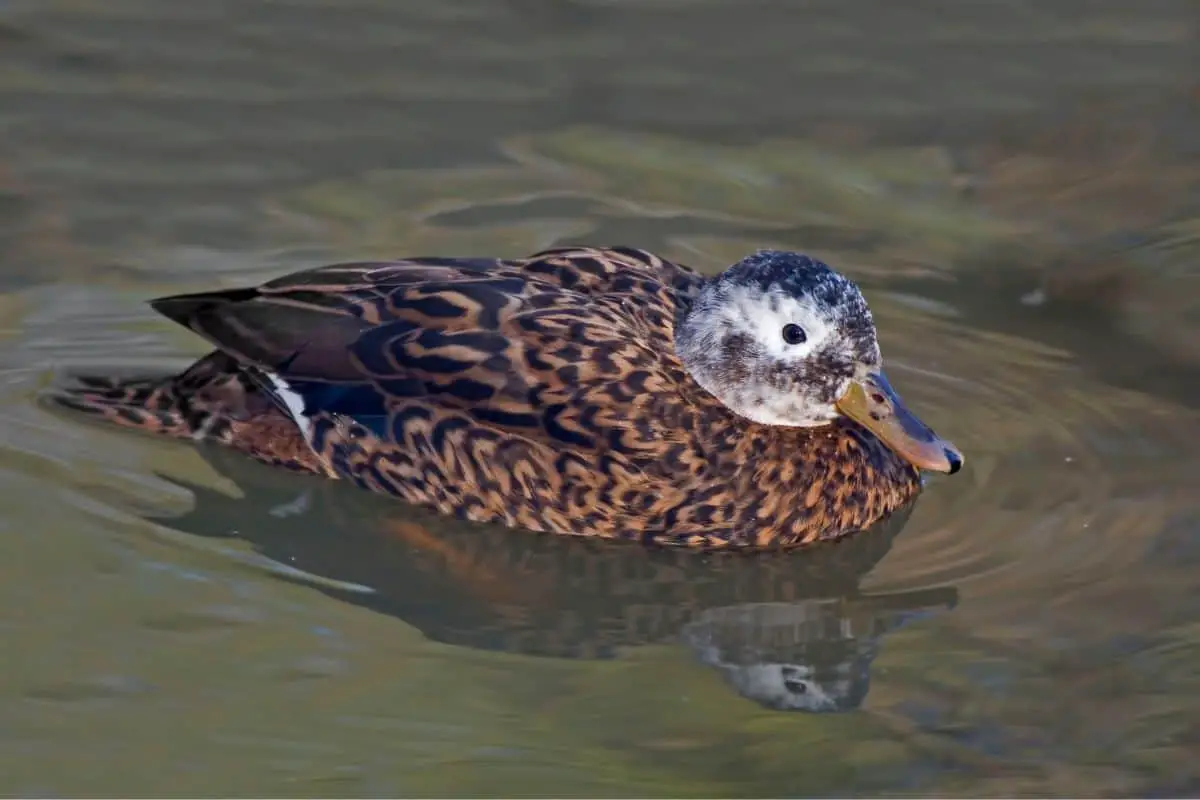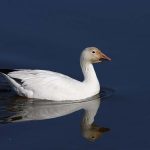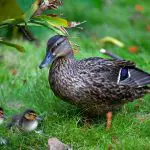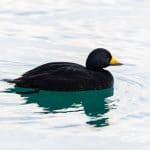Common Name: Laysan Duck
Scientific Name: Anas laysanensis| Size | Diet | Range in Hawaii | Status in Hawaii |
|---|---|---|---|
| 14 in. - 16 in. | aquatic plants, seeds, insects, crustaceans, and small fish | Laysan Island, Midway Atoll, and Pearl and Hermes Atoll | Critically Endangered |
The Laysan duck (Anas laysanensis) is a fascinating and unique species of duck that is native to the Hawaiian Islands. This small, colorful duck is known for its distinctive plumage, which includes a green head, brownish-gray body, and bright orange legs and feet.
This bird is also known for its remarkable conservation story, having been brought back from the brink of extinction in the 20th century through a combination of captive breeding and habitat restoration efforts. Today, the Laysan duck is considered a conservation success story, but its populations remain vulnerable to threats such as habitat loss, predation, and disease.
In this article, we will explore the fascinating world of the Laysan duck, including its history, behavior, and current conservation status. We will also examine the species’ existence in Hawaii and its unique relationship with the islands’ ecosystems.
Laysan Duck
Appearance
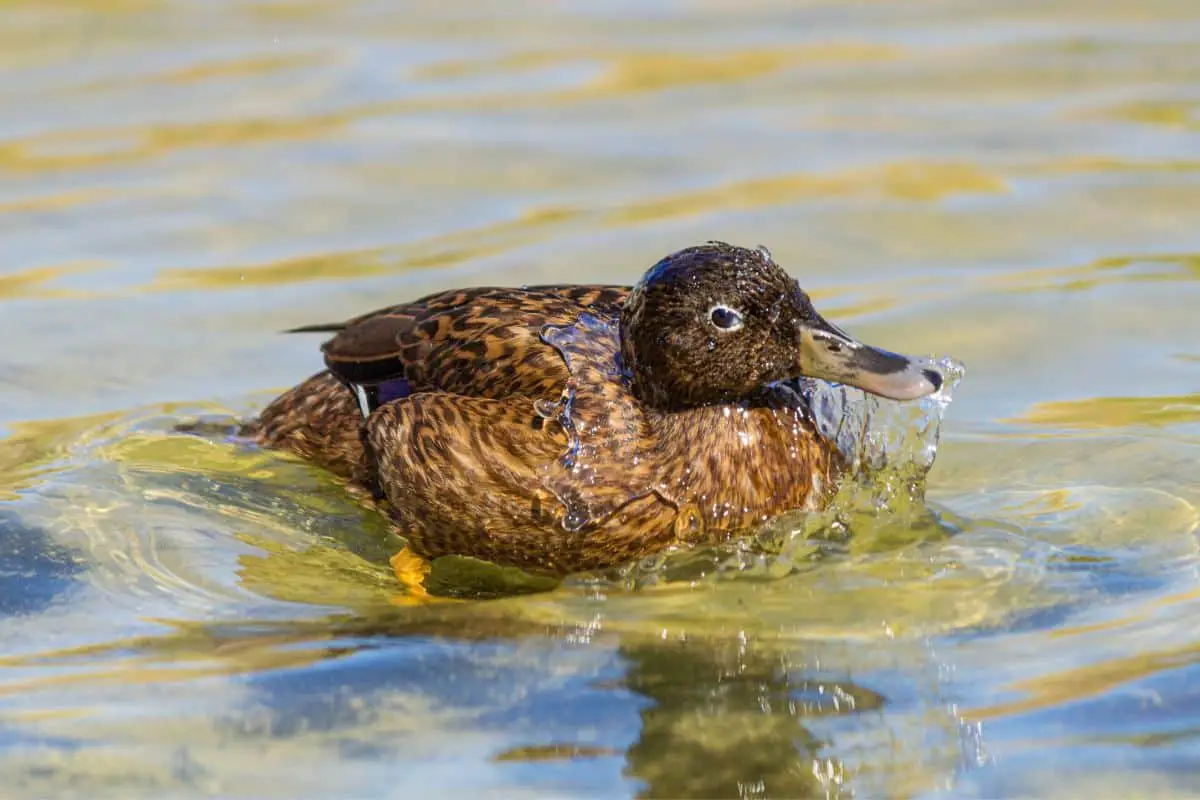
The species has a distinctive appearance, with a green head, brownish-gray body, and bright orange legs and feet. The male and female Laysan ducks have similar plumage, but the male may have a slightly brighter green head.
The Laysan duck is a small species, measuring about 14-16 inches (35-41 cm) in length and weighing between 1-2 pounds (0.5-1 kg). Despite its small size, the Laysan duck is a hardy and adaptable species that has survived in a range of wetland and coastal habitats in Hawaii.
Diet
The Laysan duck is an omnivorous species that feeds on a variety of plant and animal matter. The species’ diet includes aquatic plants, seeds, insects, crustaceans, and small fish. The Laysan duck typically forages in wetland habitats such as ponds, marshes, and coastal areas, where it feeds on a variety of food sources.
Nesting
The Laysan duck is a ground-nesting species that typically forms pair bonds during the breeding season. The species’ nesting behavior is influenced by its habitat, which includes wetland and coastal areas in Hawaii.
This bird constructs a shallow depression lined with grasses and other vegetation on the ground, where it lays a clutch of 3-7 eggs. The eggs are incubated by both the male and female for about 26-28 days, and the parents take turns caring for the young. The young are able to leave the nest and feed on their own within a few hours of hatching.
Behavior
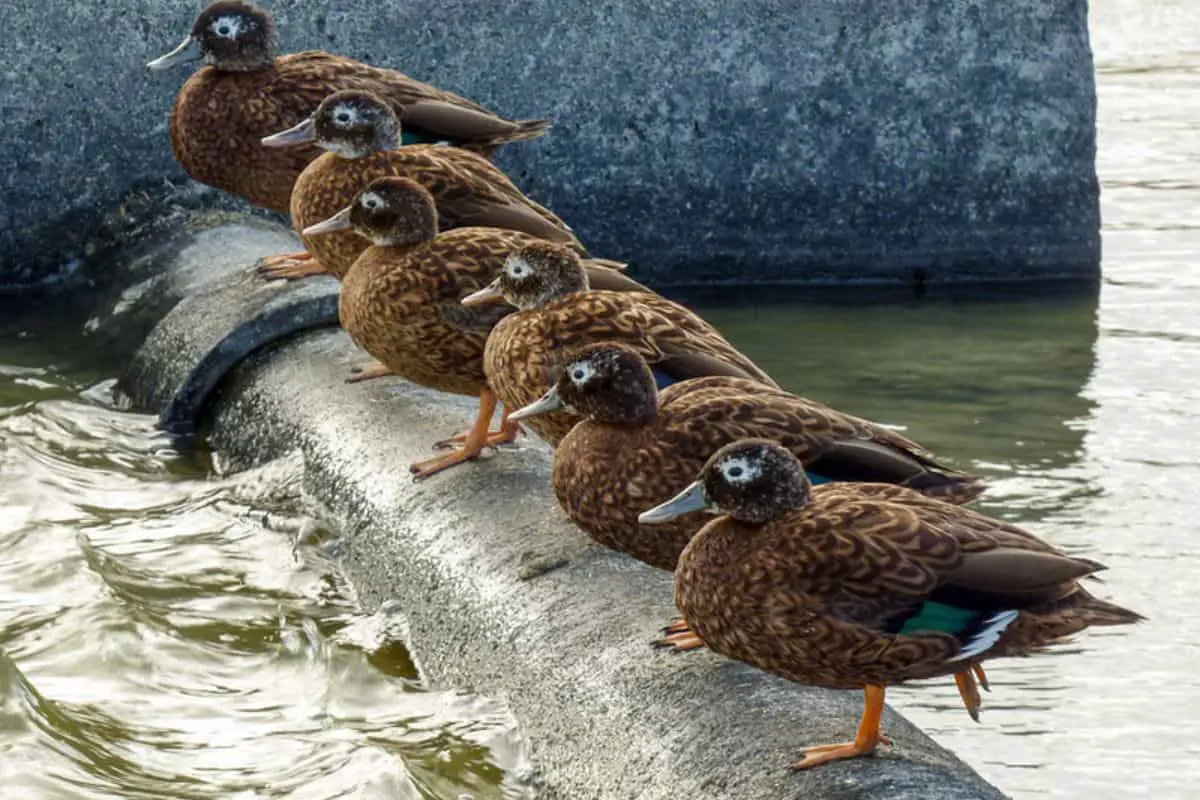
The Laysan duck is a social bird that typically lives in small groups or pairs. They are active during the day and feed on a variety of aquatic invertebrates, seeds, and vegetation. During the breeding season, males will perform courtship displays, including head bobbing and vocalizations, to attract females.
The female will then build a nest on the ground, usually near water, and lay a clutch of 4-6 eggs. Both parents will take turns incubating the eggs and caring for the ducklings once they hatch. They are also a strong flier and can migrate short distances between islands, but is primarily a non-migratory bird.
Range
The Laysan duck is endemic to the Hawaiian Islands, and is currently found only on a few small islands in the chain. The species’ range in Hawaii includes Laysan Island, Midway Atoll, and Pearl and Hermes Atoll.
Laysan Island is the primary breeding site for the species, and is home to the largest population of Laysan ducks. Midway Atoll and Pearl and Hermes Atoll are also important habitats for the species, but have smaller populations.
Habitat
Its habitat includes shallow freshwater ponds, marshes, and wetlands, as well as coastal areas with rocky or sandy beaches. The Laysan duck is a non-migratory bird that is adapted to the unique environment of the Hawaiian Islands, and is currently found only on a few small islands in the chain.
Due to habitat loss, predation by introduced species, and other threats, the Laysan duck is considered one of the most endangered waterfowl species in the world.
Conservation Status
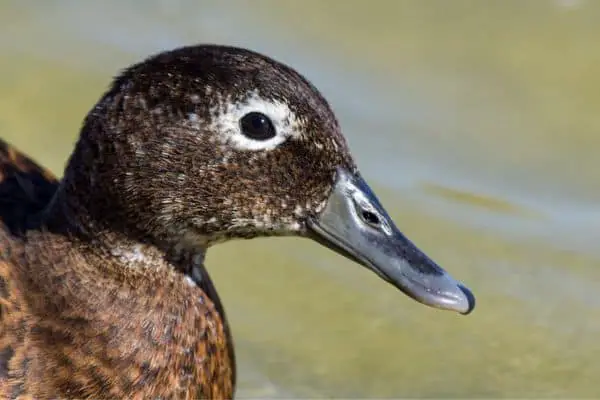
The Laysan duck is currently listed as critically endangered by the International Union for Conservation of Nature (IUCN). The species is facing severe threats from habitat loss, predation by introduced species, and climate change. The current population size is estimated at around 1,000 individuals, and ongoing conservation efforts are necessary to prevent the extinction of this unique and important species.
Interesting Facts
1. Strong flier
This bird species is a strong flier and can migrate short distances between islands, but is primarily a non-migratory bird.
2. Known for its unique vocalizations
The species is known for its unique vocalizations, which include a range of whistles, quacks, and other calls.
3. Critically endangered species
The species is critically endangered due to habitat loss, predation by introduced species, and other threats.
4. Rarest Waterfowl species in the Northern hemisphere
This bird species is one of the rarest waterfowl species in the Northern hemisphere, with a population of only around 1,000 individuals.
Frequently Asked Questions
1. What does a Laysan duck look like?
The Laysan duck has a dark brown head, a white ring around the neck, and a brown body with black and white markings. It measures around 40 cm in length and weighs less than a kilogram.
2. What is the lifespan of Laysan duck?
Their lifespan is not well known, but it is estimated to be around 10 years in the wild. In captivity, Laysan ducks have been known to live up to 20 years. However, the lifespan of individual ducks can vary depending on a range of factors, including habitat quality, food availability, predation, and disease.
3. How does the Laysan duck communicate with other ducks?
They are known for its unique vocalizations, which include a range of whistles, quacks, and other calls. These calls are used to communicate with other ducks and to establish territory.
4. How can I identify a Laysan duck in the wild?
This bird species can be identified by its distinctive appearance, which includes a dark brown head, a white ring around the neck, and a brown body with black and white markings. It is also known for its unique vocalizations.
5. Can I keep a Laysan duck as a pet?
No, it is illegal to keep a this bird species as a pet, as the species is protected under the U.S. Endangered Species Act.
